Class 1 Exam > Class 1 Notes > Mathematics for Class 1: NCERT (Joyful-Mathematics) > Chapter Notes: Fun with Numbers (Numbers 21 to 99)
Fun with Numbers (Numbers 21 to 99) Class 1 Notes Maths
| Table of contents |

|
| Introduction |

|
| Number Names (21 to 99) |

|
| Place Value (Tens and Ones) |

|
| Let's Count! |

|
| What is the Ones and Tens Concept? |

|
| Missing Numbers |

|
Introduction
- Numbers are like magic—they help us count, measure, and play games!
- Let’s explore the exciting world of numbers from 21 to 99 and discover how they can make everyday things even more fun.
- Ready to start this number adventure?
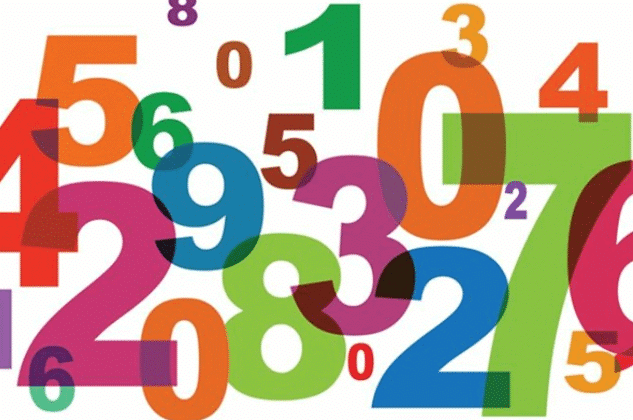
Number Names (21 to 99)
Let's start by understanding the number names for each of these two-digit numbers:
Place Value (Tens and Ones)
- In a two-digit number, the first digit represents the tens place, and the second digit represents the ones place.
- For example, in the number 56, 5 is in the tens place, and 6 is in the ones place.
- Understanding place value helps us read and write numbers correctly.
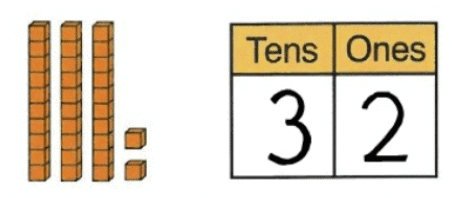
Counting (Skip Counting by Tens):
- We can count from 20 to 99 by adding 10 each time.
- For example, 20, 30, 40, 50, 60, 70, 80, 90.
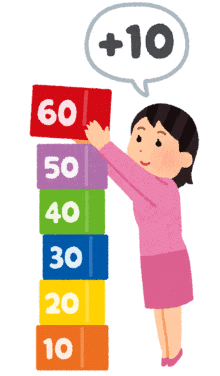
Comparison of Numbers (Greater Than and Less Than)
- We can compare two two-digit numbers by looking at the digit in the tens place first.
- If the tens digits are different, the number with the greater tens digit is greater.
- If the tens digits are the same, we compare the ones digits to determine which number is greater.
- Examples:
45 and 63: Since 6 is greater than 4, therefore 63 is greater than 45.
78 and 74: Since 7 is the same in both numbers, we look at the ones place. 8 is greater than 4, so 78 is greater than 74.
 |
Download the notes
Chapter Notes: Fun with Numbers (Numbers 21 to 99)
|
Download as PDF |
Download as PDF
Let's Count!
Numbers 21 to 30 - Let's Count
- Numbers 21 to 30 are formed by adding the tens place (20, 30) to the units place (1 to 10).
- For example, 21 is formed by adding 20 and 1, 22 is formed by adding 20 and 2, and so on.
- Practice counting from 21 to 30 to become familiar with these numbers.
Numbers 31 to 40 - One More Ten
- Numbers 31 to 40 follow a similar pattern.
- They are formed by adding the tens place (30) to the units place (1 to 10).
- For example, 31 is formed by adding 30 and 1, 32 is formed by adding 30 and 2, and so on.
- Practice counting from 31 to 40 to get comfortable with these numbers.
Numbers 41 to 50 - Moving Forward
- Numbers 41 to 50 are created by adding the tens place (40) to the units place (1 to 10).
- For example, 41 is formed by adding 40 and 1, 42 is formed by adding 40 and 2, and so on.
- Practice counting from 41 to 50 to reinforce your understanding.
Numbers 51 to 60 - Climbing Higher
- Numbers 51 to 60 continue the pattern.
- They are formed by adding the tens place (50) to the units place (1 to 10).
- For example, 51 is formed by adding 50 and 1, 52 is formed by adding 50 and 2, and so on.
- Practice counting from 51 to 60 to become proficient with these numbers.
Numbers 61 to 70 - A New Set
- Numbers 61 to 70 are formed by adding the tens place (60) to the units place (1 to 10).
- For example, 61 is formed by adding 60 and 1, 62 is formed by adding 60 and 2, and so on.
- Practice counting from 61 to 70 to strengthen your knowledge.
Numbers 71 to 80 - Further Exploration
- Numbers 71 to 80 follow the same pattern.
- They are formed by adding the tens place (70) to the units place (1 to 10).
- For example, 71 is formed by adding 70 and 1, 72 is formed by adding 70 and 2, and so on.
- Practice counting from 71 to 80 to become more confident.
Numbers 81 to 90 - Nearing the End
- Numbers 81 to 90 are created by adding the tens place (80) to the units place (1 to 10).
- For example, 81 is formed by adding 80 and 1, 82 is formed by adding 80 and 2, and so on.
- Practice counting from 81 to 90 to solidify your understanding.
Numbers 91 to 99 - The Final Stretch
- Numbers 91 to 99 follow the same pattern as the previous sets.
- They are formed by adding the tens place (90) to the units place (1 to 9, as there is no 0 in the units place).
- For example, 91 is formed by adding 90 and 1, 92 is formed by adding 90 and 2, and so on.
- Practice counting from 91 to 99 to master these numbers.
What is the Ones and Tens Concept?
The number 10 is the first and the smallest two-digit number.
Example 1:
- Let’s take 10 pencils.

- Now make a group of 10 pencils.

- We can make only 1 group. It represents 1 Ten. But there is no single pencil remaining. It indicates 0 ones.
- So, the number 10 can write as:
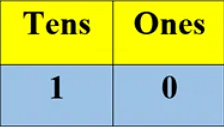
Example 2:
- If we take 21 pencils, we can make 2 groups of 10 pencils that can be represented as 2 Tens.
- 1 remaining pencil can be represented as 1 Ones.

- 2 Tens and 1 Ones = 21
- We can write 21 as:
 Example 3:
Example 3:
- We can represent 100 as 10 groups of Tens.
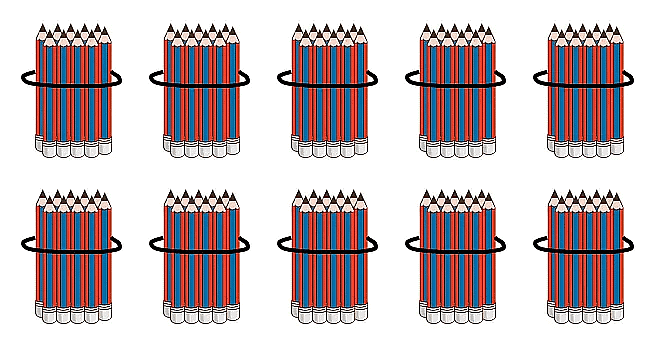
- We cannot write 100 as:
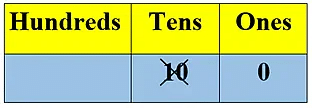
- We use the hundreds place. The number 100 is written as:

100 is the first and smallest three-digit number.
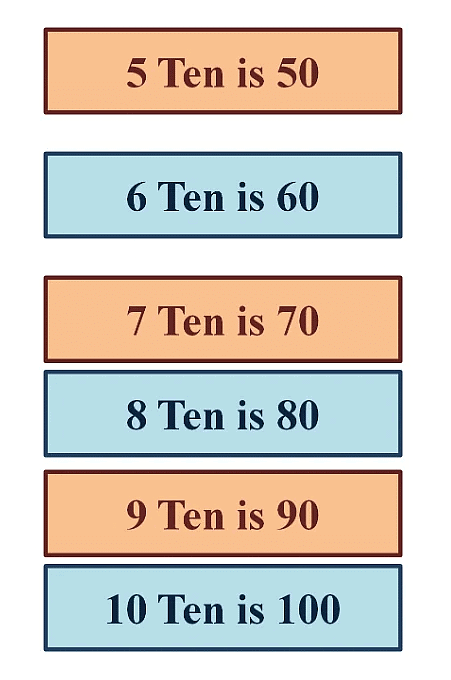
Let's calculate the number of popsicles given in the table below
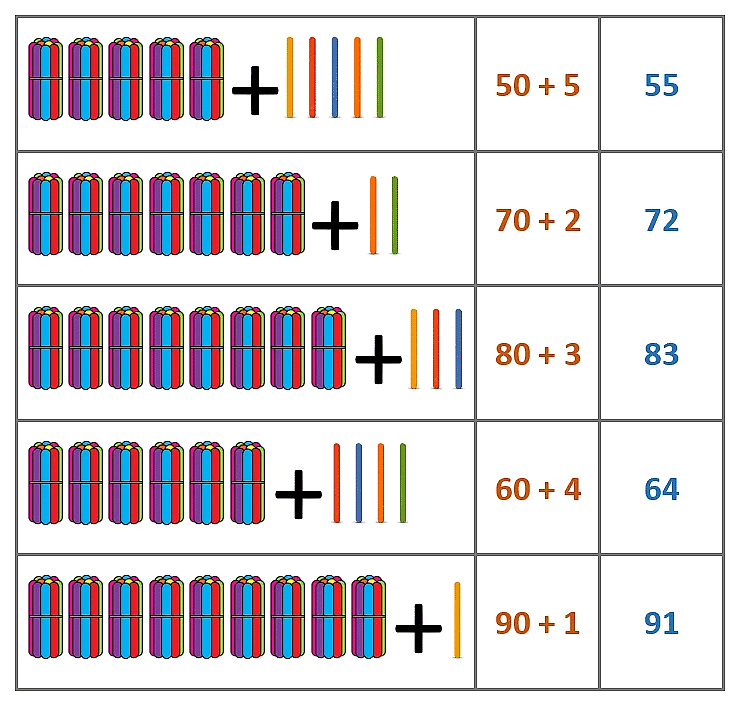
Missing Numbers
A series or sequence where a number is missed is known as a missing number sequence.
Look at the example given below.
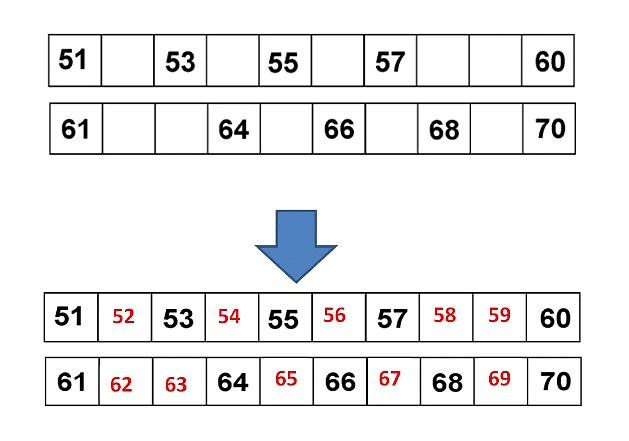
The document Fun with Numbers (Numbers 21 to 99) Class 1 Notes Maths is a part of the Class 1 Course Mathematics for Class 1: NCERT (Joyful-Mathematics).
All you need of Class 1 at this link: Class 1
|
22 videos|136 docs|20 tests
|
FAQs on Fun with Numbers (Numbers 21 to 99) Class 1 Notes Maths
| 1. What are number names for numbers 21 to 99? |  |
| 2. How do we understand place value in tens and ones? |  |
Ans.Place value helps us understand the value of digits in a number. For example, in the number 47, the digit 4 is in the tens place, representing 40, and the digit 7 is in the ones place, representing 7. Together, they make the number 47.
| 3. How can I practice counting from 21 to 99? |  |
Ans.Practicing counting can be done by counting objects, using number charts, or singing counting songs that include numbers from 21 to 99. Repeating the counting aloud helps reinforce the sequence and recognition of numbers.
| 4. What is the concept of ones and tens? |  |
Ans.The concept of ones and tens refers to how we group numbers based on their place value. Numbers can be divided into two parts: tens ( groups of ten) and ones (single units). For example, the number 56 has 5 tens (50) and 6 ones (6).
| 5. How do I find missing numbers in a sequence from 21 to 99? |  |
Ans.To find missing numbers in a sequence, look for patterns or gaps. For example, if you have 21, 22, 24, and 25, the missing number is 23. You can also write down the full sequence and identify which numbers are not included.
Related Searches
















